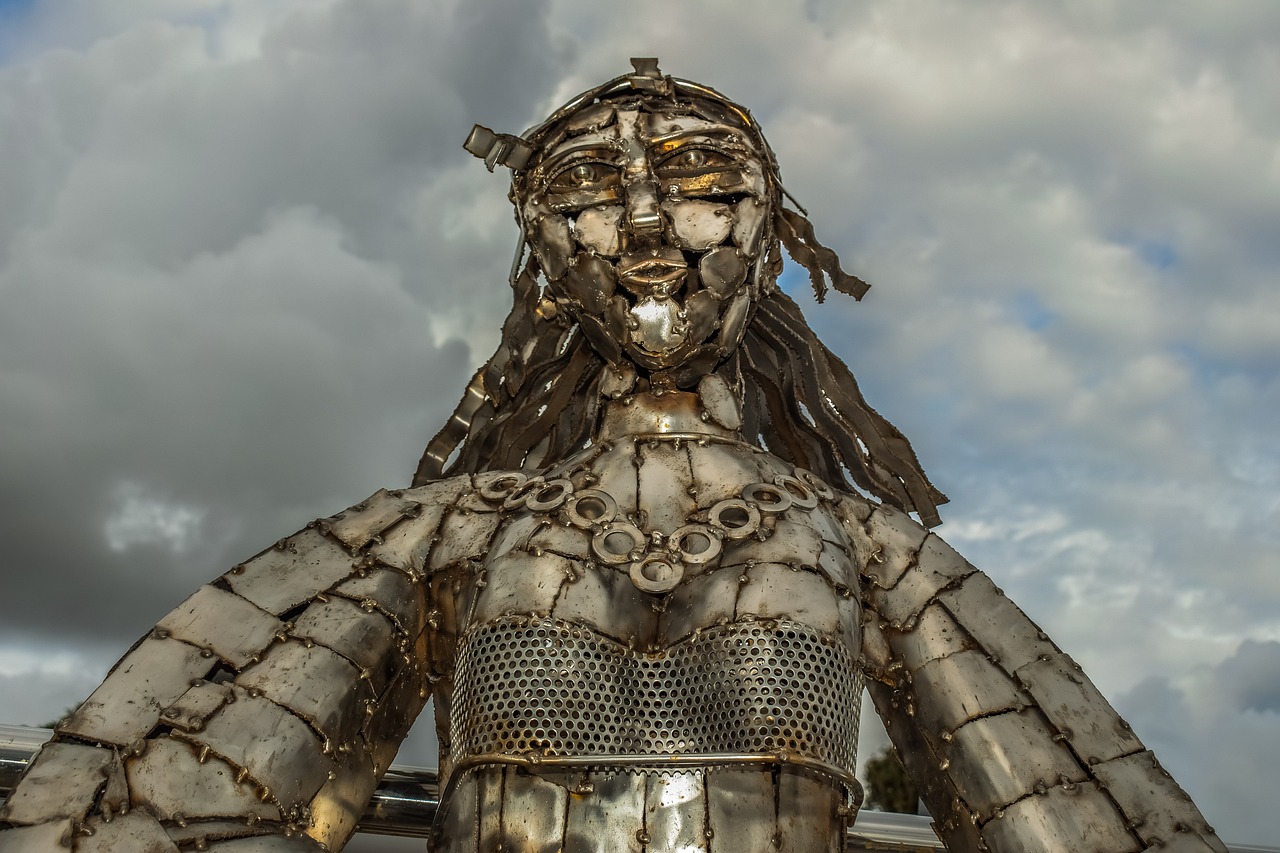Hera, the revered queen of the Olympian gods, embodies the divine aspects of marriage, women, the heavens, and the celestial stars. Often depicted as an exquisitely beautiful figure wearing a regal crown and clutching a scepter adorned with lotus motifs, she is sometimes seen alongside symbols such as a lion, a cuckoo, or a hawk.
Myths Associated with Hera
Hera’s mythology is woven through numerous tales, some of the most notable being:
- Her marriage to Zeus, during which he famously transformed into a cuckoo bird to seduce her.
- The solo birth of Hephaestus, whom she cast from the heavens due to his deformity.
- Her spite against the lovers of Zeus, particularly Leto, Semele, and Alkmene.
- Her antagonism towards Heracles and Dionysos, both of whom were Zeus’s favored illegitimate sons.
- The punishment of Ixion, who was condemned to a fiery wheel after attempting to assault her.
- Assisting the Argonauts in their quest for the Golden Fleece, particularly helping their leader Jason, whom she favored.
- The judgment of Paris, where she vied against Aphrodite and Athena for the coveted golden apple.
- Her active participation in the Trojan War, where she aided the Greek forces.
Further details about these myths can be explored in the Hera index found on various mythological websites.
Lineage of Hera
Hera’s heritage traces back to Cronos and Rhea, according to ancient texts, making her not just a sister to Zeus but an integral part of the divine family. Here are her noteworthy descendants:
- With Zeus: Hebe, Ares, and Eileithyia.
- Without a father: Hephaestus and Typhon.
Historical Significance and Worship
Hera, believed to be a native Greek deity, was associated with multiple interpretations through time, including being seen as a personification of the atmosphere or the goddess of the moon. In Roman tradition, she was identified with Juno. Her sanctuaries scattered across Greece, particularly in Argos and Samos, attest to the ancient reverence she received. The grandiosity of her cult is exemplified in a famous temple at Argos, which was adorned with intricate statues and offered a variety of sacrifices in her honor.
Descriptions and Iconography
Representations of Hera in classical art depict her as a majestic figure, often illustrated with a diadem and a significant presence that commands respect. She is typically shown with a peacock, a symbol associated with her grandeur and divinity.
Selected Ancient Texts
The Homeric Hymns, alongside Orphic hymns, encapsulate her divine essence, portraying her as the queen of immortals revered by both gods and men.
In art and literature from ancient Greece, Hera’s character is reflected in various mediums, revealing how deeply ingrained her influence was in both public worship and personal beliefs of the time.
Through these extensive narratives, Hera emerges not just as a goddess of marriage, but also as a complex character wielding powers and experiencing trials befitting a queen in the tumultuous realm of Greek mythology.



